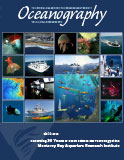Article Abstract
Since its founding, the Monterey Bay Aquarium Research Institute (MBARI) has pioneered unique capabilities for accessing the deep ocean and its inhabitants through focused peer relationships between scientists and engineers. This focus has enabled breakthroughs in our understanding of life in the sea, leading to fundamental advances in describing the biology and the ecology of open-ocean and deep-sea animals. David Packard’s founding principle was the application of technological advances to studying the deep ocean, in part because he recognized the critical importance of this habitat in a global context. Among other fields, MBARI’s science has benefited from applying novel methodologies in molecular biology and genetics, imaging systems, and in situ observations. These technologies have allowed MBARI’s bioluminescence and biodiversity laboratory and worldwide collaborators to address centuries-old questions related to the biodiversity, behavior, and bio-optical properties of organisms living in the water column, from the surface into the deep sea. Many of the most interesting of these phenomena are in the midwater domain—the vast region of ocean between the sunlit surface waters and the deep seafloor.

